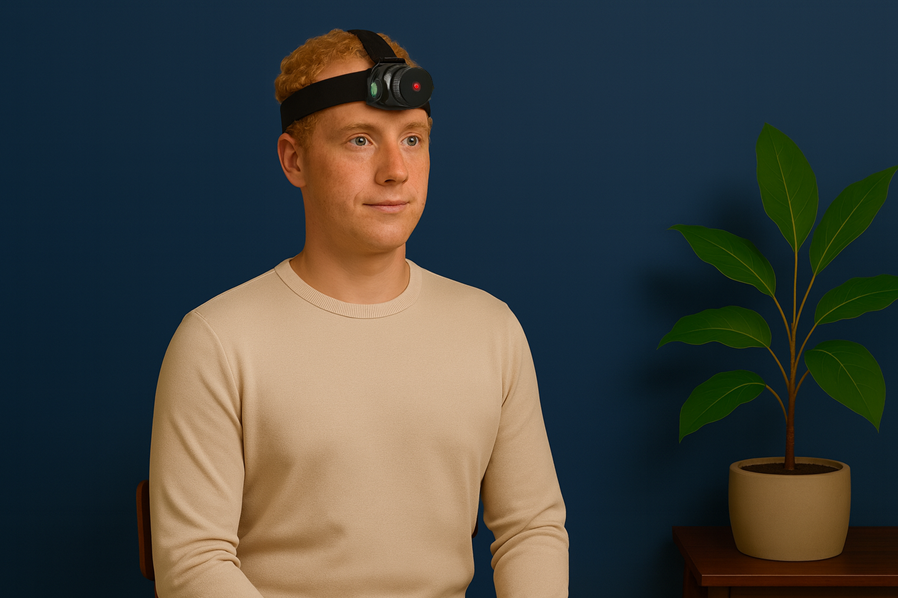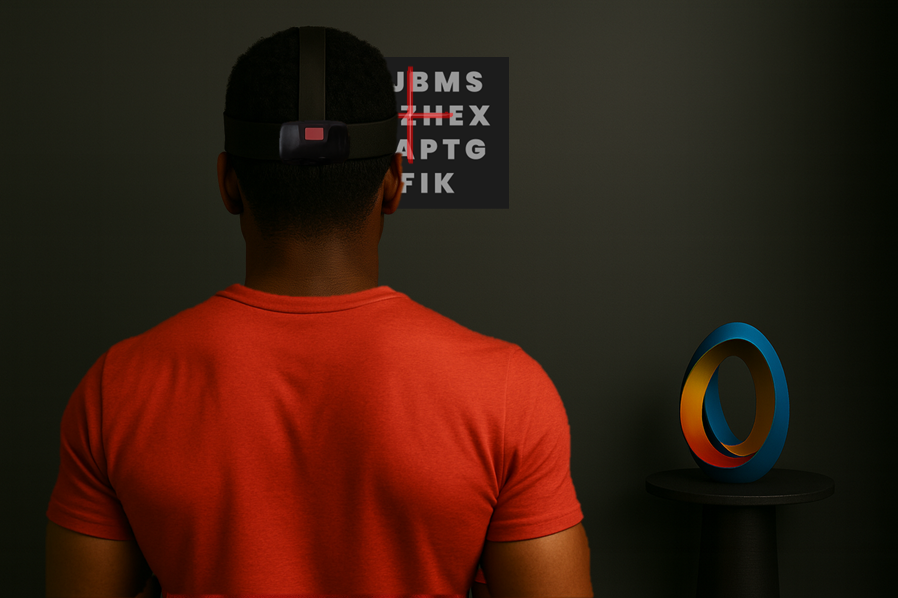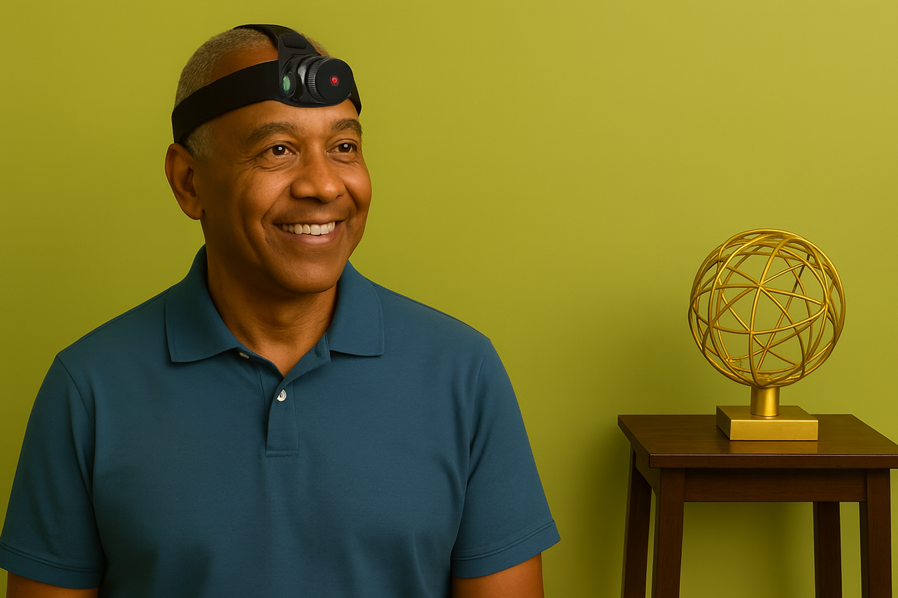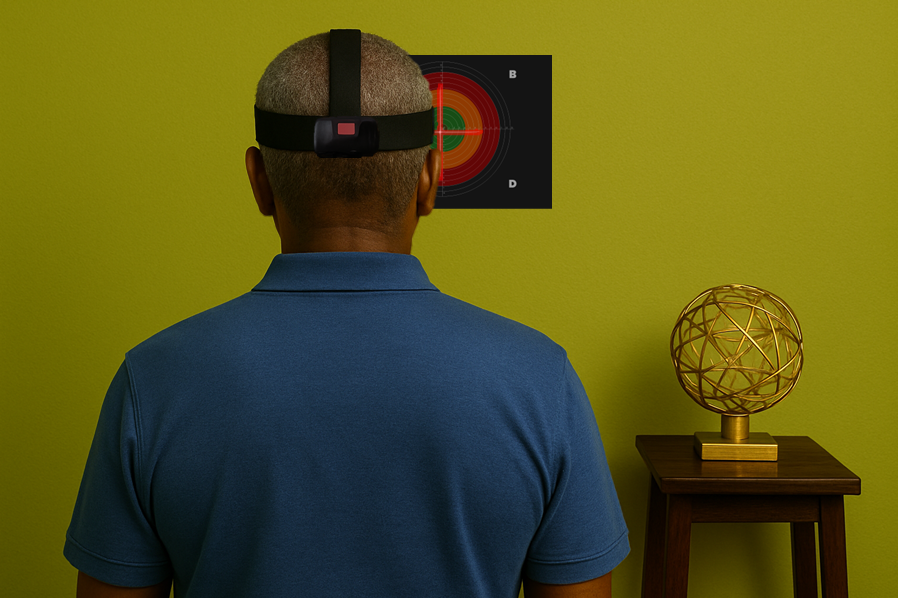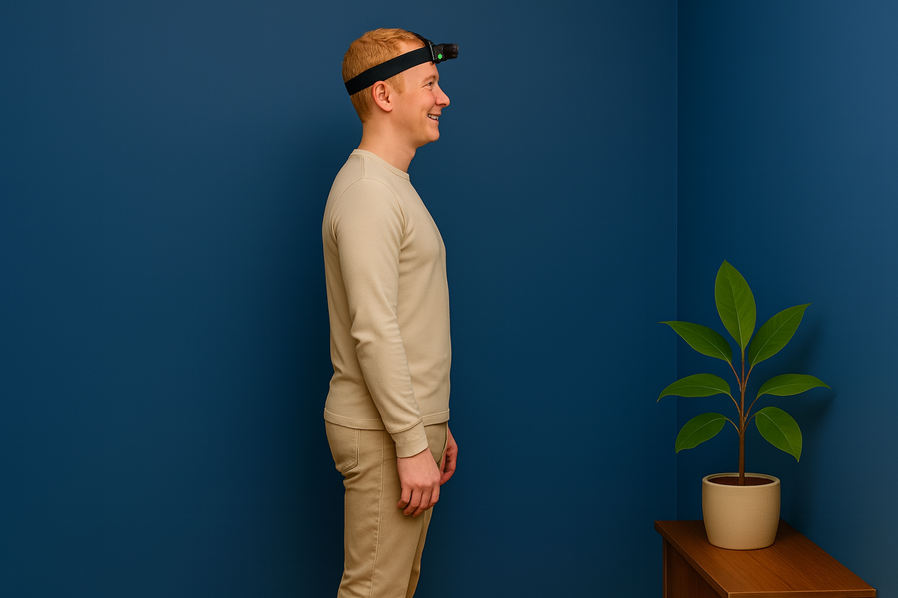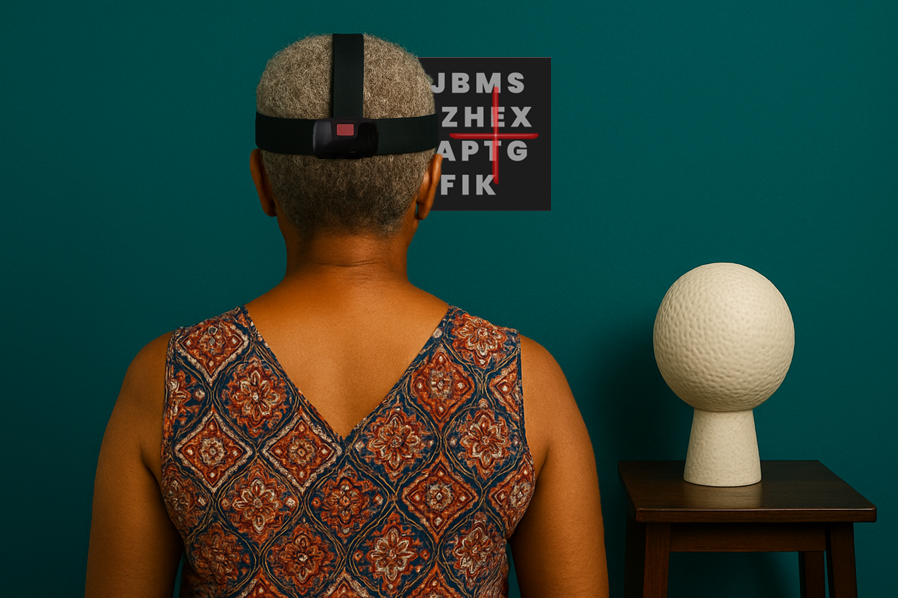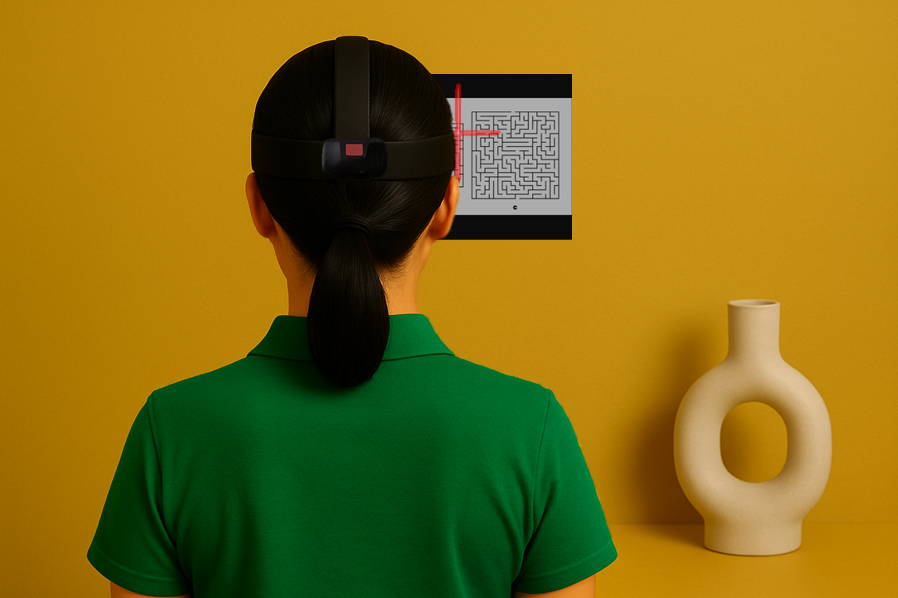Performance Reactivity and Power Control
These advanced exercises develop the ability to produce fast, coordinated actions under pressure while maintaining postural stability and visual control. By combining dynamic movement, gaze fixation and rapid decision-making, they enhance neuromuscular responsiveness, proprioceptive accuracy and cognitive resilience. Designed for high-performance contexts, this chapter prepares athletes to execute explosive, precise movements without loss of control or focus.
-
F.1
-
F.2
-
F.3
-
F.4
-
F.5
-
F.6
-
F.7
-
F.8
-
F.9
-
F.10
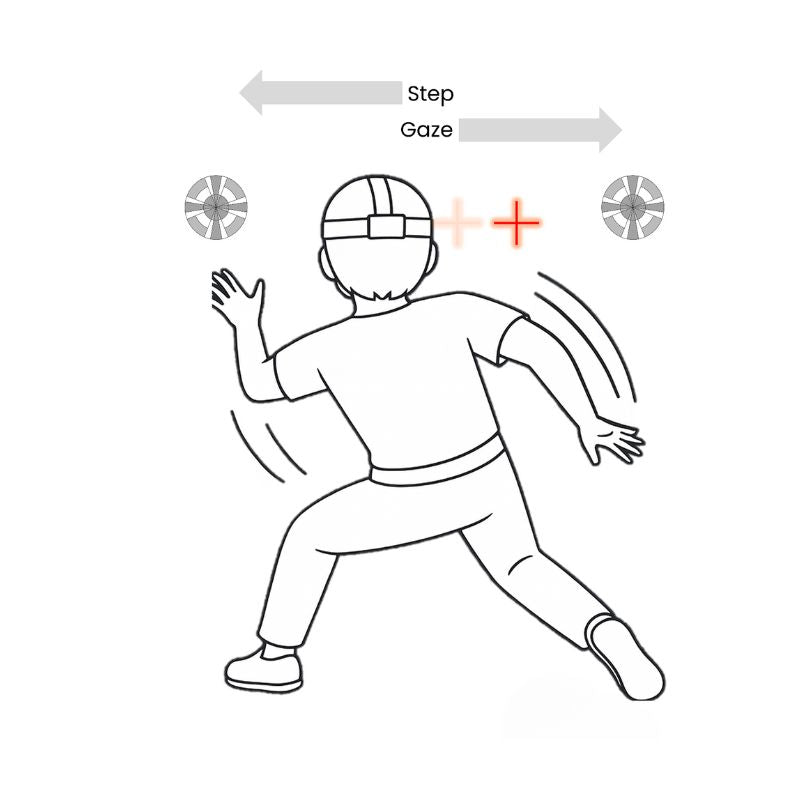
Gaze–Step–Switch
Stand upright with feet shoulder–width apart.
On cue, shift your eyes to one side while powerfully stepping laterally in the opposite direction.
Reset to the starting position.
Alternate sides with each repetition.
Maintain balance and smooth coordination between gaze and movement throughout.
Why it matters?
This exercise trains the ability to separate eye and body movements, enhancing visuomotor dissociation and reactive control.
It challenges coordination when gaze and footwork diverge, supporting agility and spatial awareness.
Critical for athletes who need to change direction quickly while tracking a moving target or scanning their environment under pressure.
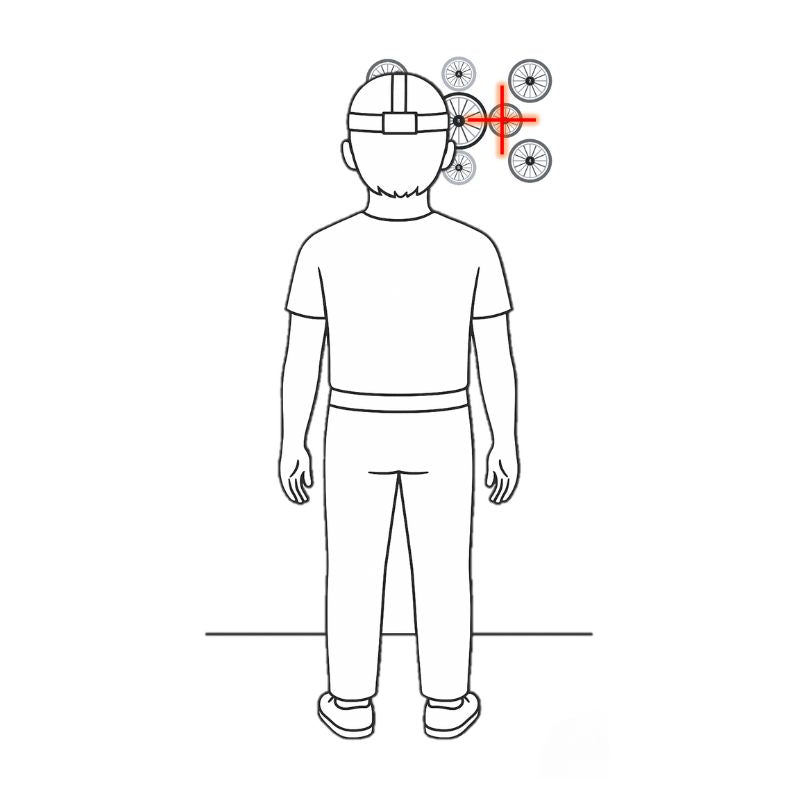
Reactive Pattern Match
Stand facing a target grid with a cross-hair aligned to the centre point.
A partner calls out a three-point pattern (e.g. “B–2–F”), which must be traced in correct sequence with the laser before returning to centre.
Perform sequences at speed with precision.
Why it matters?
Combining visual recognition, working memory and precise head control, this task develops the ability to process and execute multi-step instructions under time constraints.
It supports fast, accurate decision-making and spatial recall, vital in sports where tactical patterns and positional awareness are essential to performance in reactive or team-based situations.
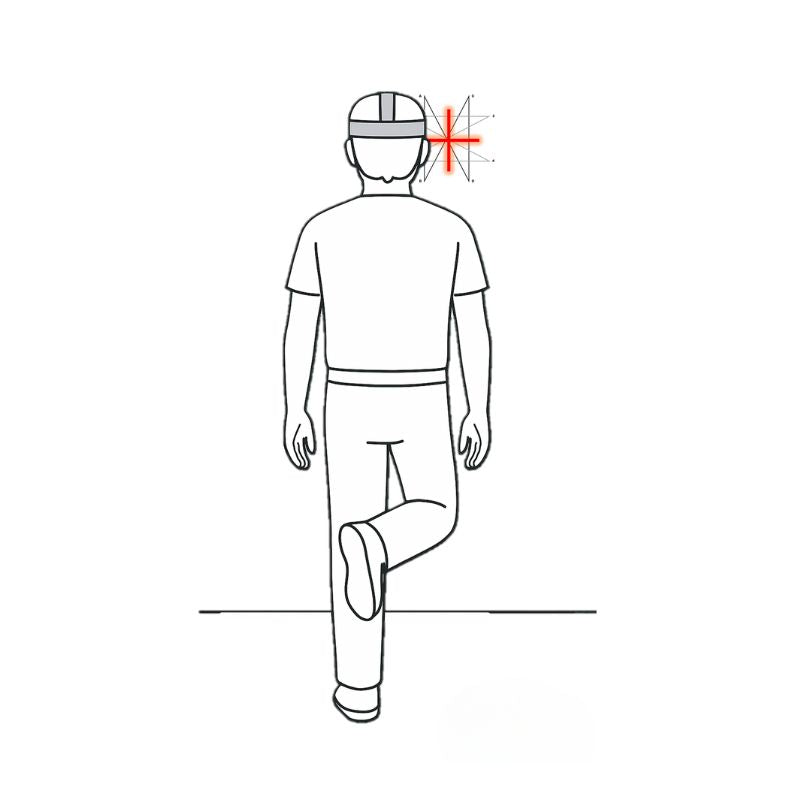
Trace–Balance–Recall
Stand on one leg and trace a complex cross-hair pattern on the wall.
After completing the trace, close your eyes and attempt to repeat it from memory.
Alternate legs each round, maintaining balance and smooth tracing throughout.
Why it matters?
Balancing on one leg while tracing and recalling a shape from memory targets postural control, proprioception and visual memory.
It challenges neuromuscular coordination under cognitive load, developing the ability to maintain single-limb stability and spatial precision in sports that demand both balance and rapid decision-making without full visual feedback.
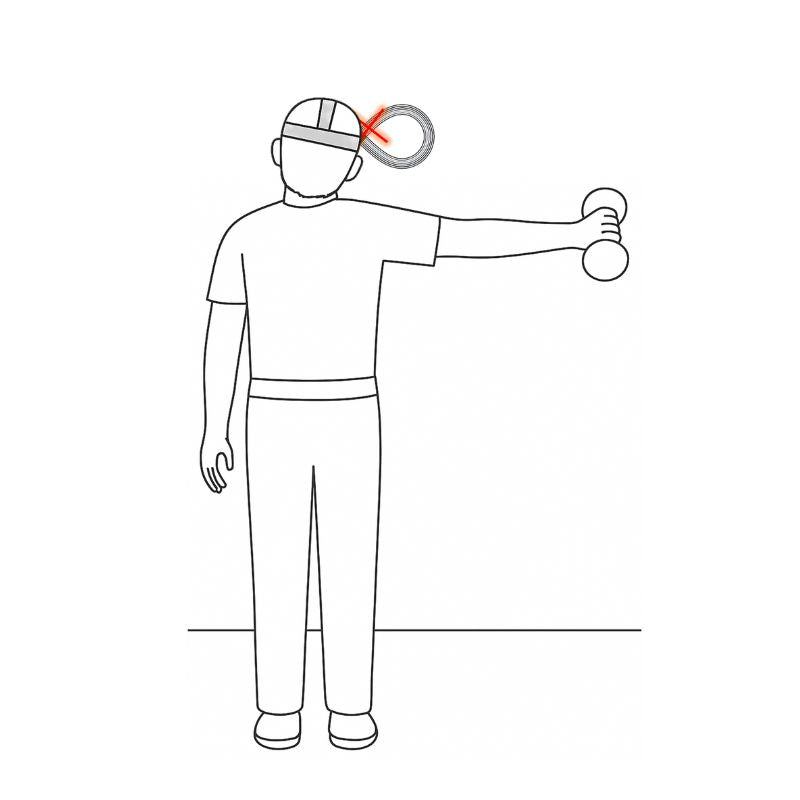
Arm Extension Lockout
Hold a weight out with arms fully extended.
Maintain an upright posture while tracing a smooth figure-eight pattern.
Rest and repeat, alternating arms.
Keep arm extension and gaze steady throughout.
Why it matters?
This exercise builds shoulder endurance and upper-body control while stabilising gaze.
Tracing under load trains postural alignment and fine motor accuracy, relevant for athletes who perform sustained or overhead movements.
It reinforces focus and physical control during extended efforts common in racquet sports, climbing, throwing, or defensive contact positions.
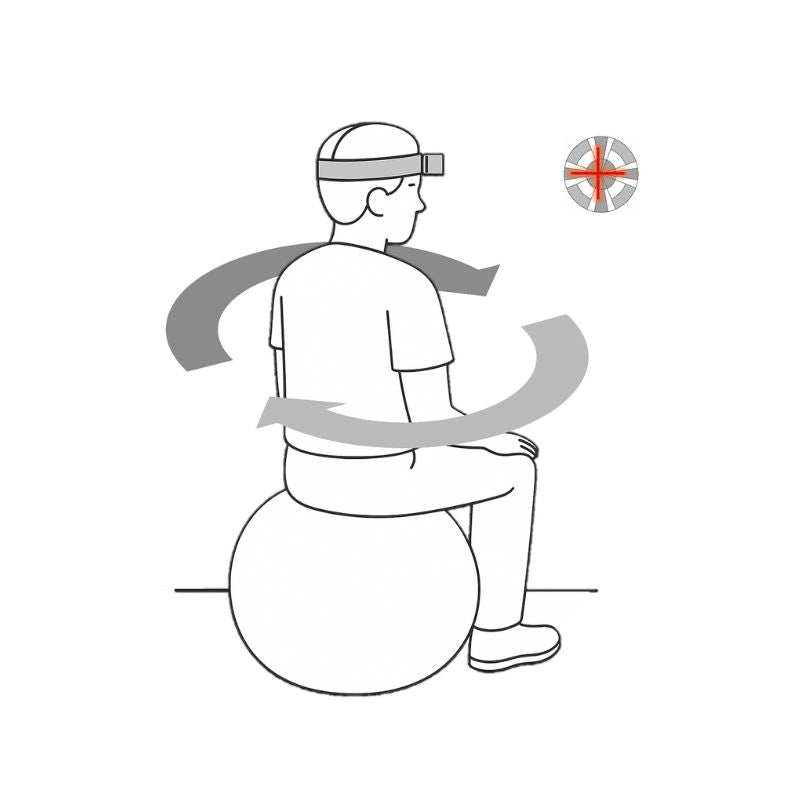
Rotation with Head Fixation
Sit tall on an exercise ball with feet flat and knees hip-width apart.
Project the cross-hair onto a central target.
Move the lower body rotations side to side, keeping your head and laser stable.
Increase the speed and size of rotation for greater challenge.
Why it matters?
By rotating the trunk while maintaining head stability, this task builds segmental control and vestibular integration.
It enhances your ability to move dynamically from the hips while keeping vision steady, a skill critical for sports involving torso-driven rotation, reactive movement or whole-body power output under directional constraints.
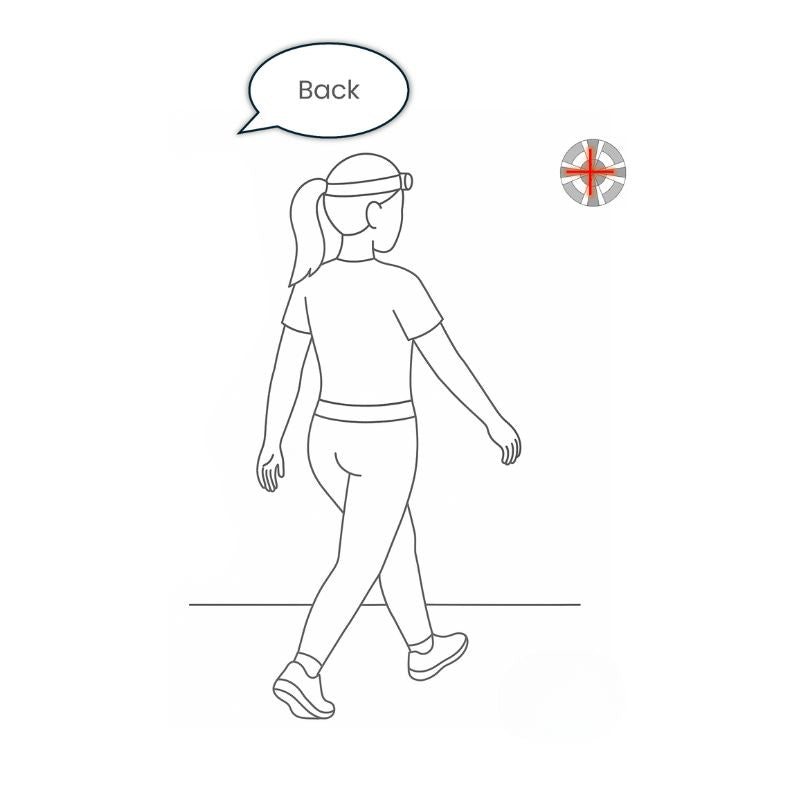
Reactive Step Sequence
Stand facing forward.
A partner calls out a a series of pattern using directions such as “Forward”, “Left” or “Back”.
Execute the steps in order while maintaining laser alignment with a central target.
Perform varied sequences, resetting between each one.
Increase the number of instructions and step intensity as appropriate.
Why it matters?
Following spoken cues while maintaining gaze trains auditory–motor coordination, foot placement accuracy and spatial control.
It enhances reactive agility and decision-making under instruction.
This mirrors the demands of competitive sport where athletes must execute unpredictable movements without visual disengagement or loss of control during pressure-based transitions.
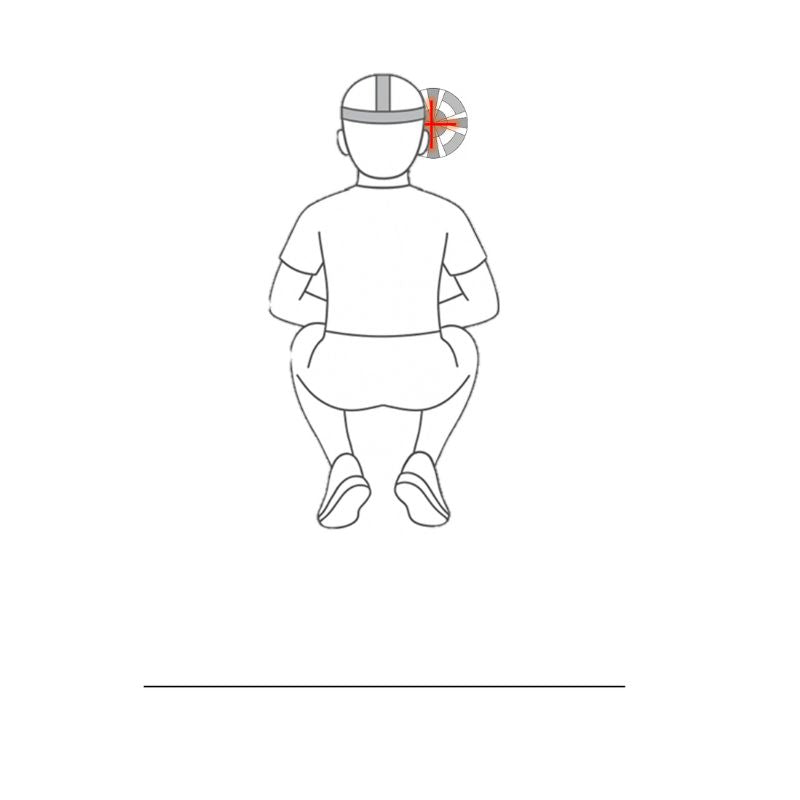
Tuck Jump Fixate
Stand with feet shoulder-width apart, facing a central wall target at eye level.
Perform a controlled tuck jump by lifting both knees towards your chest while airborne.
As you land, immediately stabilise your body and fixate the cross-hair on the central target.
Focus on re-establishing visual alignment with minimal head movement.
Why it matters?
Combining explosive jumping with post-landing gaze fixation, this task develops lower-limb power, landing control and cervical–ocular reorientation.
It reinforces neuromuscular synchrony following ballistic movements, helping athletes quickly re-stabilise posture and vision after high-impact actions like rebounds, aerial tracking, blocking or fast vertical transitions.
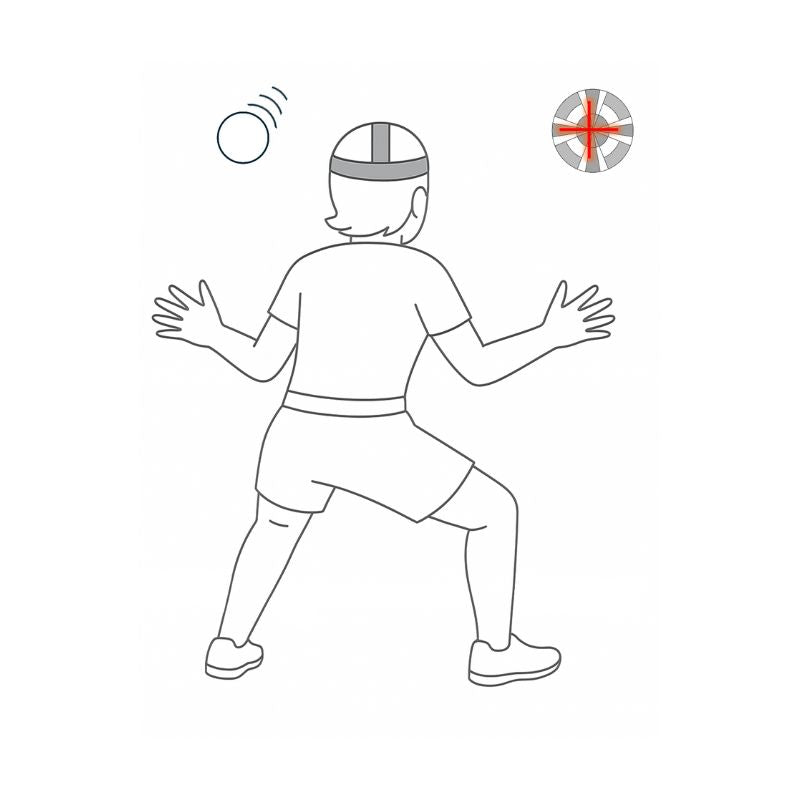
Ball Drop Reaction
Fixate the laser on a central wall target.
A partner throws a soft ball into your peripheral field of view.
Catch and return it without allowing the laser to drift.
Perform drops both sides whilst keeping consistent head and body position.
Why it matters?
This drill improves peripheral vision and rapid limb response while keeping head and eyes still.
It trains reaction speed and spatial awareness without compromising cervical stability, vital for sports where interception, scanning and fast lateral responses are required under conditions of distraction or limited visual preview.
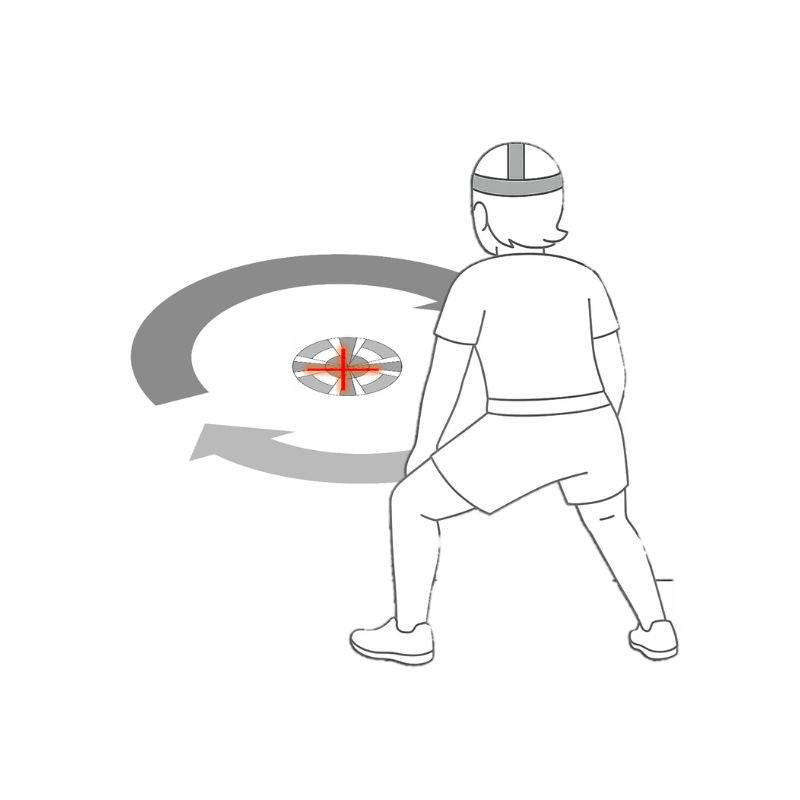
Clockwise–Anticlockwise Step Trace
Step laterally in a large circular motion around a fixed point while keeping the laser trace aligned on a central point.
Switch directions on partner cue.
Perform clockwise and anticlockwise laps while maintaining control and rhythm.
Why it matters?
Maintaining visual fixation while stepping in a circular path challenges dynamic balance, rhythm and spatial orientation.
It develops the ability to keep head and gaze steady while the body moves through complex trajectories, supporting stability and orientation in turning, pivoting or tracking tasks common in sport and performance.
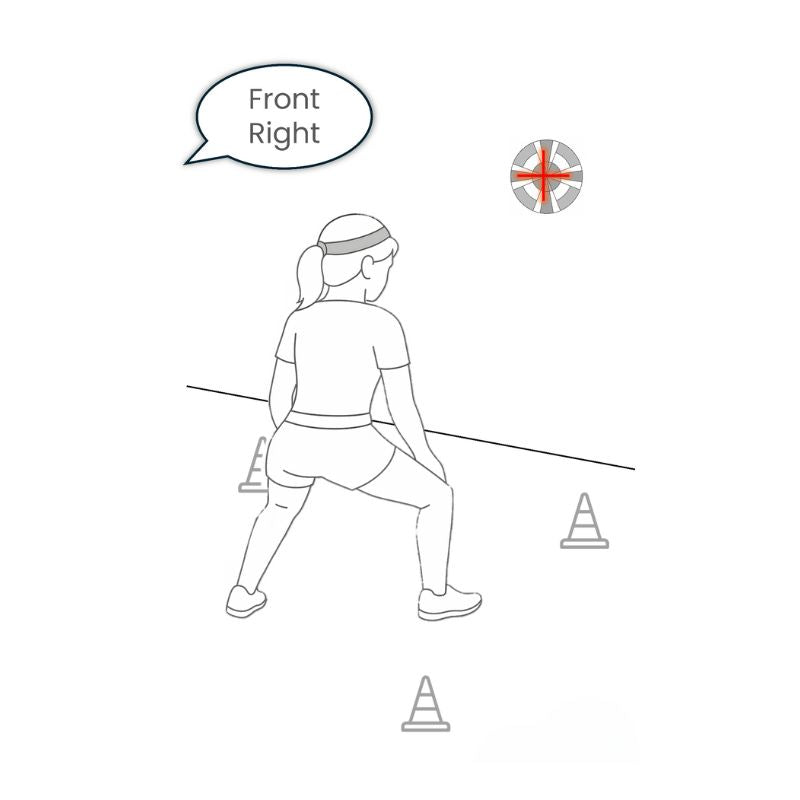
Cone Tap React
6 passes
Place four cones in a square around your standing position.
Fix the cross-hair on a central wall target.
On partner cue, reach out with your foot to tap the named cone, then return to centre.
Perform 12 taps at varied angles.
Why it matters?
Tapping cones at different angles while fixating on a target builds lower-limb reactivity, proprioception and coordination under visual constraint.
It trains athletes to execute fast, precise foot placements without relying on visual feedback, supporting performance in reactive agility, obstacle negotiation and situations demanding quick, multidirectional footwork.

